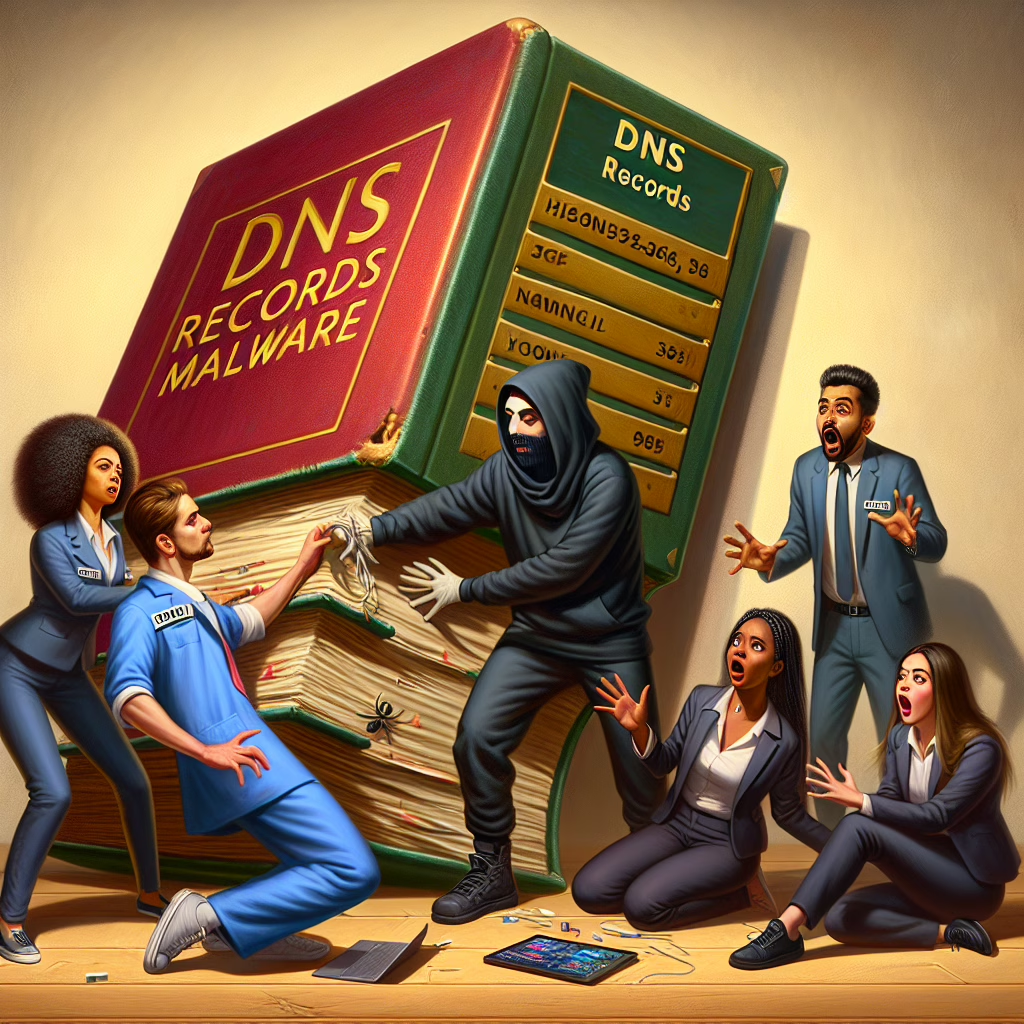In the ever-evolving realm of cybersecurity, hackers are always on the lookout for new and exciting ways to wreak havoc. In 2025, it seems they’ve hit a home run by hiding malware in DNS records—yes, you read that right! If you thought DNS was just a boring part of the internet infrastructure, think again. This clever tactic exploits a blind spot that leaves many organizations scratching their heads.
What Are DNS Records and Why Are They Important?
First things first, let’s break down what DNS records are. The Domain Name System (DNS) is like the phonebook of the internet. It translates human-friendly domain names (like www.example.com) into IP addresses (the numbers that computers use to communicate). Without DNS, we’d be lost in a sea of numbers, frantically trying to remember which number corresponds to which site. Imagine calling your friend by their phone number instead of their name—awkward!
DNS records tell your computer where to find websites, email servers, and other critical resources on the internet. These records play a crucial role in maintaining the connectivity we often take for granted. However, this essential service also has its vulnerabilities—cue the hackers!
How Hackers Exploit DNS Records
Hackers have discovered that by embedding malicious code within legitimate DNS queries and responses, they can slip through security systems unnoticed. This method is akin to hiding a needle in a haystack—only this time, the haystack is your organization’s network.
Once the malware infiltrates a system via these deceptive DNS records, it can carry out various nefarious activities: stealing sensitive data, launching ransomware attacks, or even creating botnets to carry out further attacks. It’s like inviting a wolf into your sheep pen and wondering why your flock is disappearing!
Defending Against DNS-Based Attacks
So, how can organizations defend themselves against this crafty tactic? Here are some actionable tips:
- Implement DNS Filtering: Utilize security solutions that can filter out suspicious or malicious DNS requests. This acts as your digital bouncer at the club of cyberspace.
- Monitor DNS Traffic: Keep an eye on your DNS traffic for any unusual patterns or spikes. If you notice something odd, it might be time for an intervention.
- Educate Your Team: Ensure that everyone in your organization understands the importance of cybersecurity and how to recognize potential threats. Remember, knowledge is power!
- Regular Software Updates: Keep all software updated to patch any vulnerabilities. Think of this as giving your digital fortress some much-needed renovations.
The Future of Cybersecurity: Staying One Step Ahead
The landscape of cybersecurity is continually shifting, and staying informed about new tactics like malware hidden in DNS records is vital for all organizations. As we navigate through 2025 and beyond, embracing advanced security measures and fostering a culture of awareness will be key.
In conclusion, while hackers may have found an innovative way to exploit DNS records, we don’t have to throw our hands up in defeat. With proactive measures and a dash of humor (because who doesn’t need a laugh when discussing cybersecurity?), we can bolster our defenses against these sneaky cybercriminals.
If you’ve had experiences with similar security issues or have tips of your own, we invite you to share your thoughts in the comments below!
A special thank you to Ars Technica for providing such insightful information on this topic. Moreover, consider reading about more on how criminals target systems in our [article on protecting your network](https://www.geekyopinions.com/samsung-galaxy-z-flip-7-vs-motorola-razr-ultra-flip-phone-showdown/) to ensure a comprehensive understanding of safeguarding your data.

